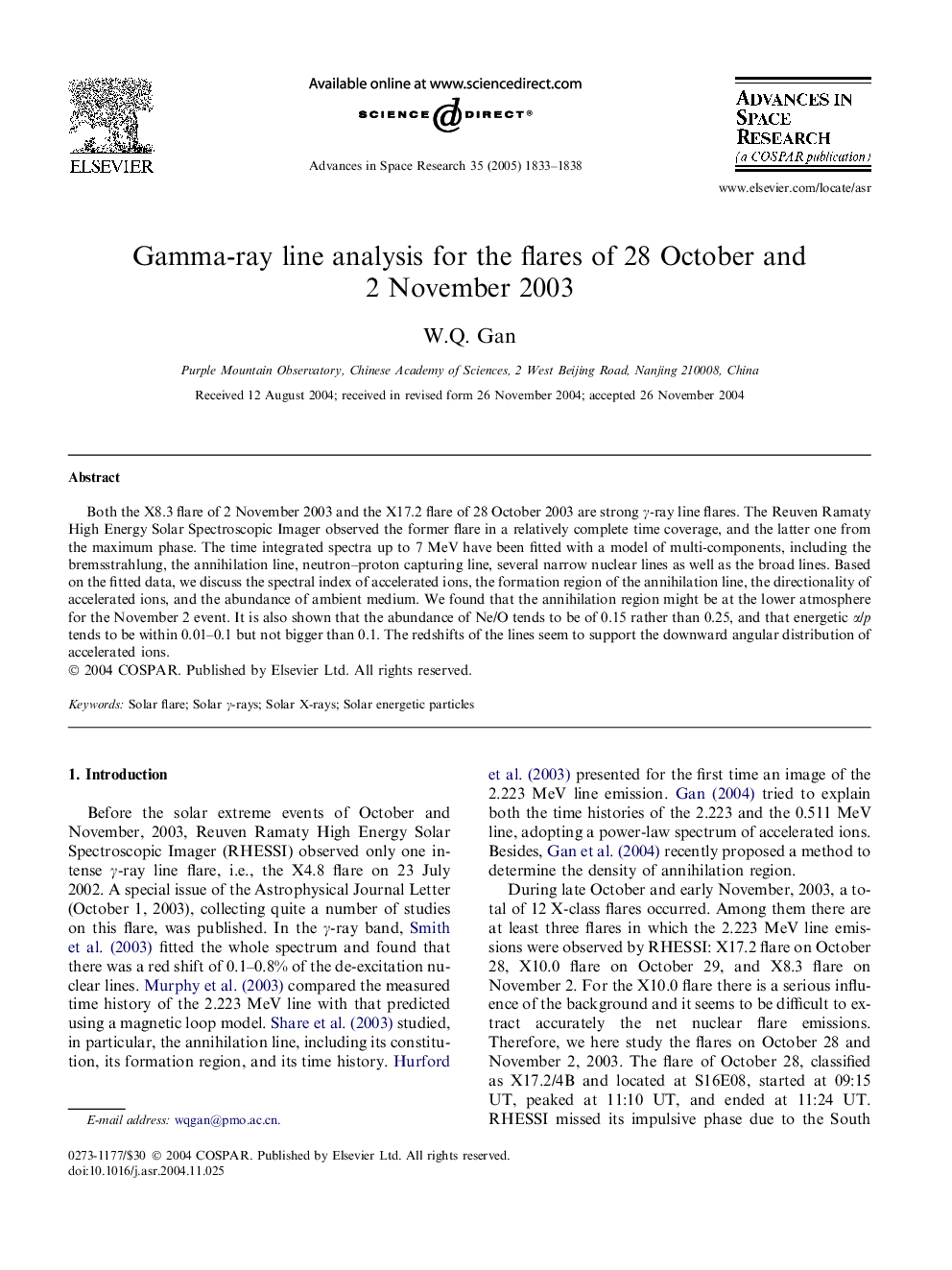| Article ID | Journal | Published Year | Pages | File Type |
|---|---|---|---|---|
| 10695025 | Advances in Space Research | 2005 | 6 Pages |
Abstract
Both the X8.3 flare of 2 November 2003 and the X17.2 flare of 28 October 2003 are strong γ-ray line flares. The Reuven Ramaty High Energy Solar Spectroscopic Imager observed the former flare in a relatively complete time coverage, and the latter one from the maximum phase. The time integrated spectra up to 7 MeV have been fitted with a model of multi-components, including the bremsstrahlung, the annihilation line, neutron-proton capturing line, several narrow nuclear lines as well as the broad lines. Based on the fitted data, we discuss the spectral index of accelerated ions, the formation region of the annihilation line, the directionality of accelerated ions, and the abundance of ambient medium. We found that the annihilation region might be at the lower atmosphere for the November 2 event. It is also shown that the abundance of Ne/O tends to be of 0.15 rather than 0.25, and that energetic α/p tends to be within 0.01-0.1 but not bigger than 0.1. The redshifts of the lines seem to support the downward angular distribution of accelerated ions.
Related Topics
Physical Sciences and Engineering
Earth and Planetary Sciences
Space and Planetary Science
Authors
W.Q. Gan,
